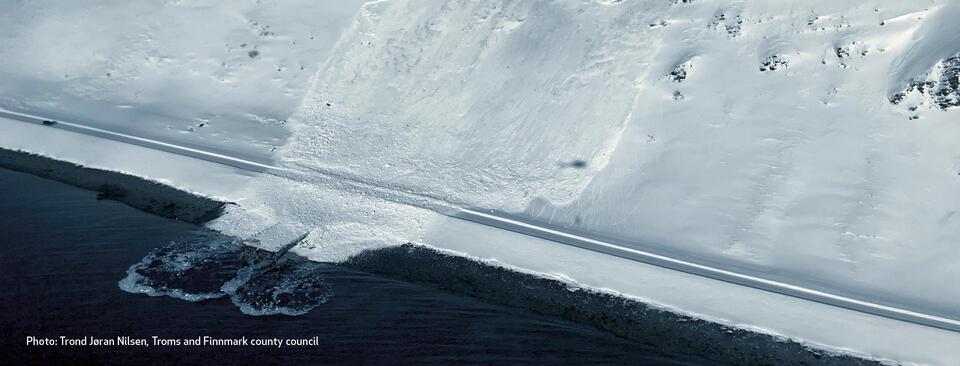Safer Roads with Fiber-Optic Solutions

Fiber optic technology, developed by NORSAR and partners, delivers societal benefits. In the 2022/2023 avalanche season, the pilot snow avalanche warning system in Holmbuktura, southeast of Tromsø, successfully demonstrated enhanced precision and significant reduction in false alarms. This system, capable of detecting avalanches impacting roads and locating vehicles, will enhance safety.
Avalanches pose significant safety challenges both in Norway and in other parts of the world. The need for an advanced avalanche warning system is evident, particularly in regions such as Troms and Finnmark, who have approximately 200 avalanche points on county roads alone. Nationwide, there are around 1,500 avalanche points, half of them with adjacent landslide runs. The economic burden of physically protecting all avalanche-prone locations is estimated to be NOK 70 billion. Here, the introduction of a fiber-optic avalanche warning system emerges as a life-saving and cost-effective solution.
In 2023, we have had the pleasure of continuing the collaboration with Norconsult and Alcatel Submarine Network, Norway on an innovation project in cooperation with Troms and Finnmark County Council on the development of a snow avalanche monitoring solution based on fiber optic cables in the road. The system detects if a snow avalanche hits the road and if any vehicles are in the avalanche area. This information can then be used to close the road and avoid further traffic.
Fiber-optic measurements are one of the technologies NORSAR uses to measure vibrations in the underground, also called Distributed Acoustic Sensing (DAS). The method involves sending light into the fiber cables. When the cable is disturbed by the surroundings (e.g., vibrations), it will affect light reflections on the part of the cable in question. The reflections from high-frequency light pulses have various properties that can be analyzed to detect and locate events along the cable with great precision and in real-time. The use of fiber optic cables has major advantages in this field compared to more traditional methods such as radar, geophones and cameras. The fiber cable is buried in the ground, is little exposed to physical strains and works regardless of the weather.
Between December 2022 and January 2023, the conventional system at Holmbuktura triggered 21 avalanche alarms, with only four impacting the road. Pilot tests demonstrate that the fiber system reliably detects avalanches affecting the road, reducing false alarms by 94%. Furthermore, automatic detection algorithms can identify vehicles and categorize them by type, quantity, velocity, and direction, all without the need for images to ensure privacy compliance. This data, coupled with accurate avalanche detection, enhances road safety and aids search and rescue efforts, particularly in sparsely populated areas.
Looking ahead to 2024, we are committed to testing the system for a second season, fine-tuning algorithms, and initiating the commercialization process to make this system available for broader use, thus contributing to safer roads.
